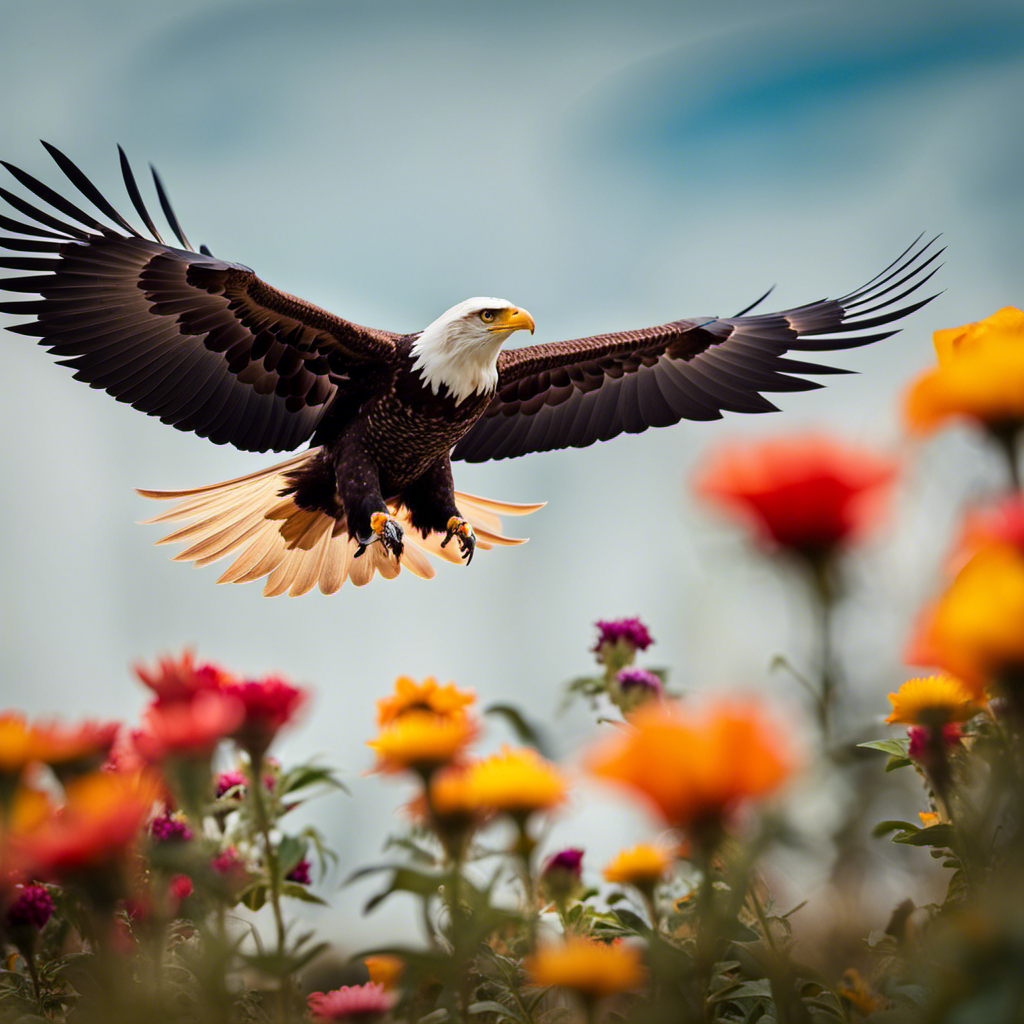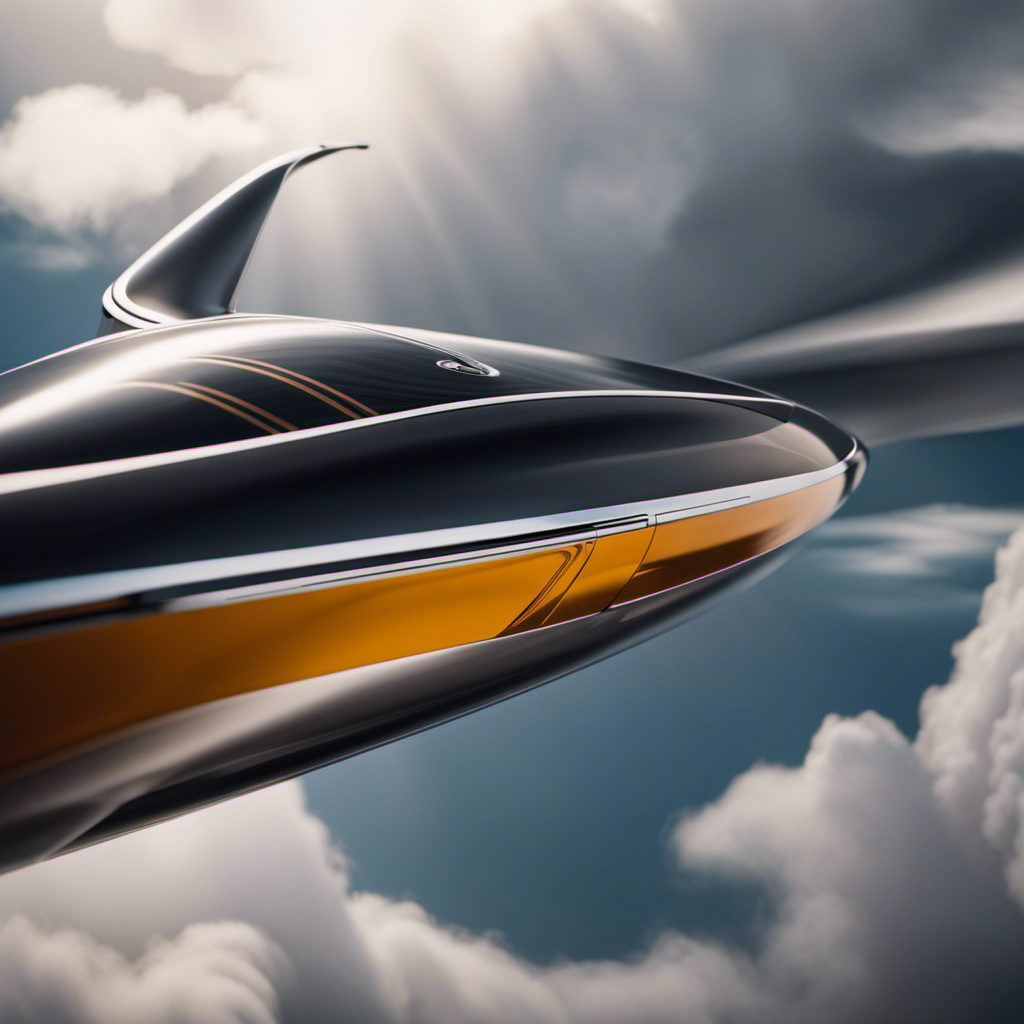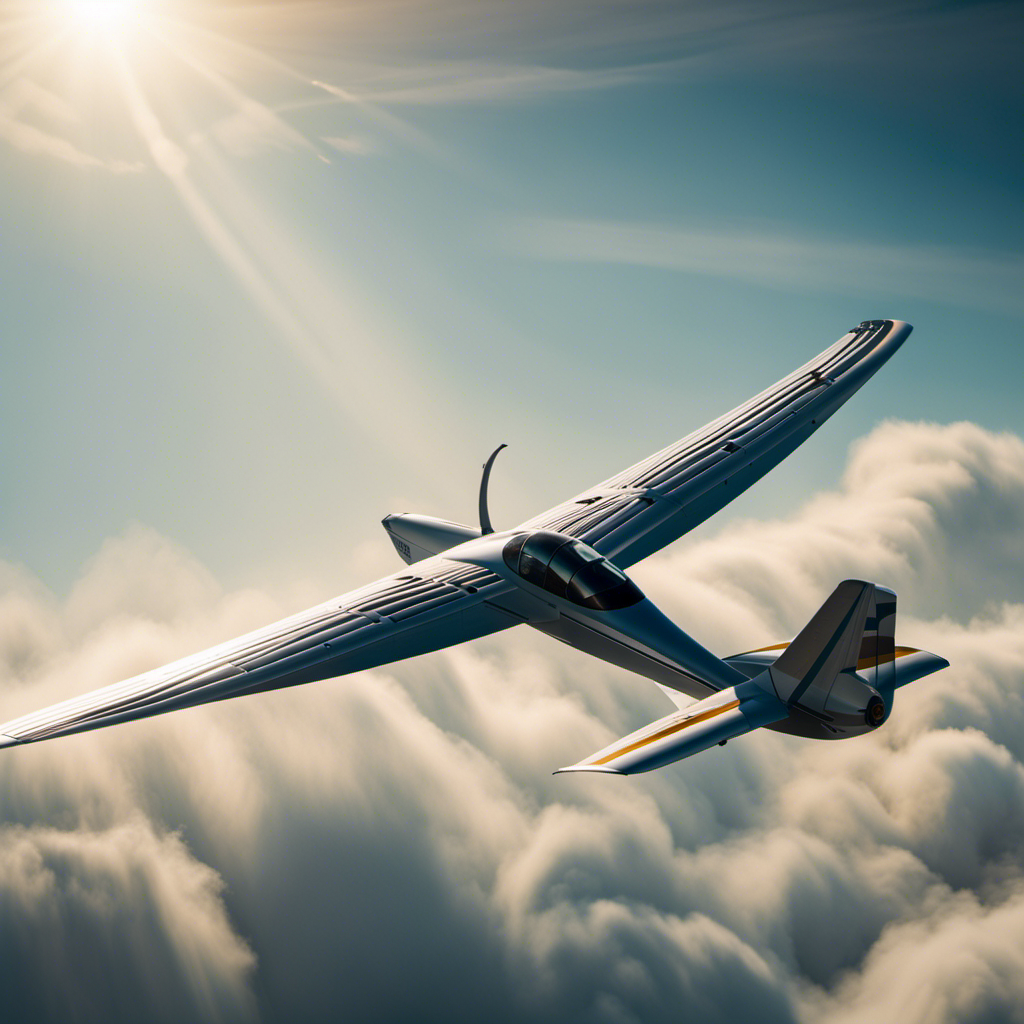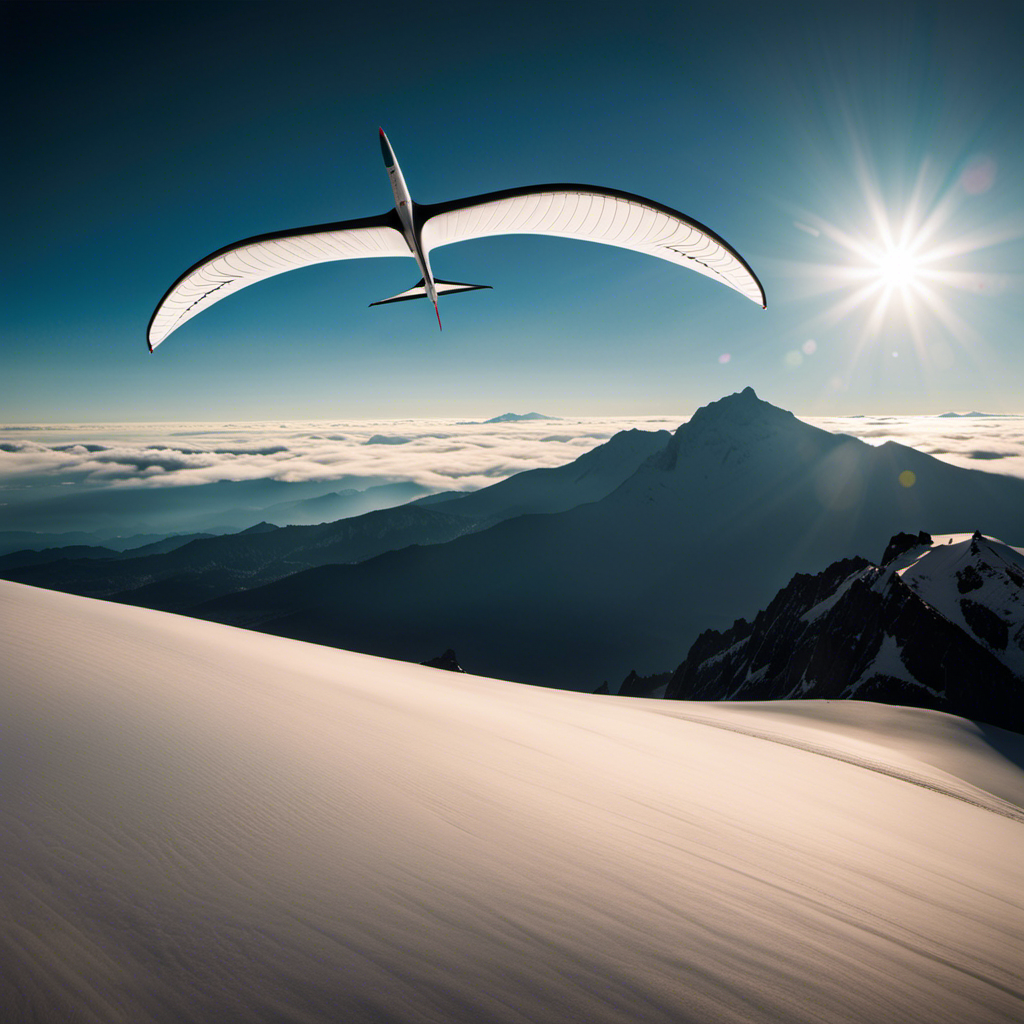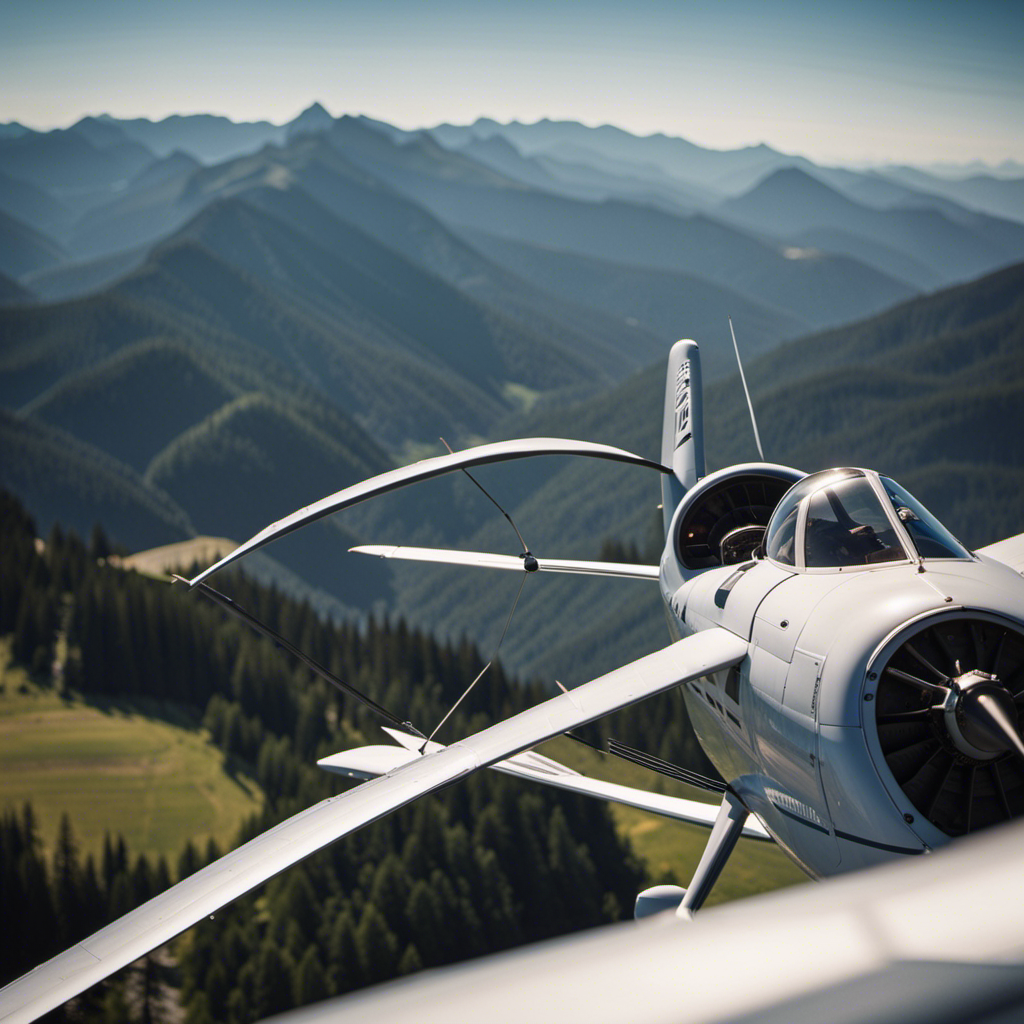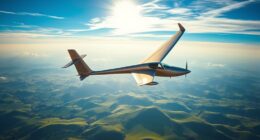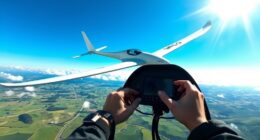Have you ever thought about the distinction between gliding and flying? Get ready, as we’re about to delve into an adventure in the skies.
In this article, we will explore the technicalities and nuances that set soaring and flying apart. From the characteristics and techniques used, to the various types and equipment employed, you’ll gain a precise understanding of these two mesmerizing forms of aerial movement.
So, sit back, relax, and prepare to be captivated by the beauty and diversity of flight.
Key Takeaways
- Soaring involves utilizing natural air currents such as ridge lift, thermals, and wave lift to gain altitude and travel long distances without an engine.
- Ridge soaring relies on the upward wind created by the slope of a mountain or ridge, while thermal soaring utilizes rising columns of warm air called thermals.
- Wave soaring takes advantage of atmospheric waves caused by wind interacting with mountains or obstacles, providing an exhilarating experience and the opportunity to reach great heights.
- Soaring offers the advantages of energy efficiency, increased visibility, and the ability to observe the natural world from a unique perspective, but it is dependent on weather conditions and requires specialized skills and knowledge. Flying, on the other hand, allows for quick and efficient travel, the freedom to explore the sky, and access to otherwise inaccessible destinations, but it requires careful navigation, understanding of air currents, and considerations of weather conditions, fuel consumption, and air traffic control.
Definition of Soaring and Flying
Soaring is when you’re gliding through the air without any propulsion, while flying is when you’re actively moving through the air using some form of propulsion.
In soaring, you rely on natural sources of lift, such as thermals, updrafts, and ridge lift, to stay airborne. This means that you can maintain your altitude or even gain height without the need for an engine or any external force.
It’s a skill that requires a deep understanding of the movement of air currents and the ability to exploit them to your advantage. Soaring allows you to cover long distances and experience the freedom of flight without the constant noise and vibration of an engine.
Now, let’s delve into the characteristics of soaring and explore why it is such a unique and thrilling experience.
Characteristics of Soaring
In the discussion on the characteristics of soaring, you will explore the key points of utilizing natural air currents, extended duration of flight, and minimal energy expenditure.
By utilizing natural air currents, soaring allows you to take advantage of the upward drafts and thermals, enabling you to stay airborne for longer periods of time.
Additionally, as you soar effortlessly through the air, you minimize the amount of energy expended, making it a more efficient method of flight.
Utilizing Natural Air Currents
You can easily take advantage of natural air currents while flying by adjusting your wings and body position.
To paint a clear picture, consider the following:
-
Adjusting your wings:
-
Extend your wings fully to increase surface area and generate more lift.
-
Angle your wings slightly upward to catch rising air currents and gain altitude.
-
Adjusting your body position:
-
Streamline your body by tucking in your head and limbs to reduce drag.
-
Position yourself in the center of the air current to maintain stability and balance.
By skillfully manipulating both your wings and body position, you can harness the power of natural air currents to stay aloft and maneuver effortlessly through the skies.
This ability to utilize air currents effectively is crucial for extended durations of flight.
Extended Duration of Flight
To maximize your flight time, it’s important to conserve energy and find efficient ways to stay airborne.
One way to achieve this is by utilizing thermal updrafts. These are columns of rising warm air that can provide lift and extend your flight duration.
As a pilot, you can identify thermal updrafts by observing soaring birds or by using specialized instruments such as variometers.
Once you locate a thermal, you can circle within it to gain altitude and maintain your flight without expending excessive energy.
By utilizing these natural air currents, you can extend your flight time and cover longer distances with minimal energy expenditure.
This allows you to explore new territories and experience the joy of soaring through the sky for extended periods.
Minimal Energy Expenditure
By conserving energy and using thermal updrafts, you can extend your flight time and cover longer distances with minimal effort. Soaring allows you to achieve this by harnessing natural forces and using them to your advantage. Here are three key aspects of minimal energy expenditure in soaring:
-
Thermal Updrafts: By detecting and riding thermals, you can gain altitude without using any additional energy. These columns of warm air rising from the Earth’s surface provide the necessary lift to keep you airborne.
-
Ridge Lift: When wind strikes a mountain or ridge, it is forced upwards, creating a lift that can be utilized by gliders. By flying close to these features, you can take advantage of this upward force and maintain altitude.
-
Wave Lift: In certain atmospheric conditions, standing waves can form downwind of mountain ranges. These waves can carry gliders to extreme altitudes without the need for any propulsion, allowing for extended flights.
With these techniques, pilots can achieve extended flight times and cover vast distances effortlessly.
Now, let’s explore the techniques and equipment used in soaring to enhance your flying experience.
Techniques and Equipment Used in Soaring
Using specialized gliders and instruments, you can employ various techniques and equipment to soar through the air. By utilizing thermals, which are columns of warm air rising from the ground, you can gain altitude and maintain your height without expending much energy.
To locate these thermals, you can use variometers, instruments that measure the rate of climb or descent. Additionally, ridge lift can be utilized by flying close to slopes or ridges, where the wind is forced to rise. This upward motion can be detected using windsocks or wind vanes.
Another technique is wave soaring, where you ride on waves of air created by the interaction between the wind and mountain ranges. This requires specialized gliders equipped with oxygen systems to reach higher altitudes.
These techniques and equipment are essential for efficient soaring and will be further explored in the subsequent section on the characteristics of flying.
Characteristics of Flying
As you navigate through the air, it’s important to understand the various characteristics of flying.
Flying involves the ability to move through the air using wings or other mechanisms. It requires a combination of lift, thrust, and control to stay airborne.
Lift is generated by the shape of the wings and the movement of air over them.
Thrust is the force that propels the aircraft forward, usually provided by engines or propellers.
Control is necessary to navigate and maneuver the aircraft, achieved through the use of ailerons, elevators, and rudders.
Understanding these characteristics is crucial to safely operating an aircraft.
Now, let’s explore the techniques and equipment used in flying.
Techniques and Equipment Used in Flying
Now that you understand the characteristics of flying, let’s delve into the techniques and equipment used in this exhilarating activity. Flying requires a specific set of skills and tools to ensure a safe and enjoyable experience. Here are some key aspects to consider:
-
Flight Controls:
-
Elevator: Controls the pitch of the aircraft, allowing it to climb or descend.
-
Ailerons: Control the roll of the aircraft, facilitating banking or turning.
-
Rudder: Manages the yaw of the aircraft, enabling it to change direction.
-
Instruments:
-
Altimeter: Measures altitude above sea level.
-
Airspeed Indicator: Displays the aircraft’s speed through the air.
-
Vertical Speed Indicator: Indicates the rate at which the aircraft is ascending or descending.
-
Navigation Systems:
-
GPS: Provides accurate positioning information and navigation assistance.
-
VOR/DME: Enables navigation using radio signals from ground-based beacons.
Understanding these techniques and equipment is crucial for a successful flight. Now, let’s explore the different types of soaring.
Different Types of Soaring
When it comes to soaring, there are three key techniques to understand: ridge soaring, thermal soaring, and wave soaring.
Ridge soaring involves flying along the edge of a ridge or mountain, where the wind is forced upwards, creating lift.
Thermal soaring, on the other hand, relies on rising columns of warm air called thermals to gain altitude.
Lastly, wave soaring involves riding on the upward and downward motion of air waves generated by strong winds hitting a mountain range.
Ridge Soaring
You can experience the thrill of ridge soaring by riding the wind along the edge of a mountain. Ridge soaring is a type of soaring where the wind is deflected upwards by the slope of the mountain, creating an upward current of air. This allows glider pilots to fly for extended periods of time without the need for an engine.
To ridge soar, you need to position your glider in the area of maximum lift, which is usually on the windward side of the mountain. By carefully maneuvering your glider, you can stay in the rising air and maintain altitude. Ridge soaring requires skill and knowledge of wind patterns and terrain, but it offers an exhilarating experience for pilots.
Transitioning into thermal soaring, you can also experience the joy of using rising columns of warm air to gain altitude.
Thermal Soaring
To gain altitude while thermal soaring, you rely on rising columns of warm air. These columns, known as thermals, are created when the sun heats the Earth’s surface, causing the air to rise.
As a pilot, your goal is to locate and enter these thermals to gain altitude and extend your flight time. You must carefully observe the surrounding terrain and weather conditions to identify areas where thermals are likely to form.
Once inside a thermal, you use the upward motion of the air to climb higher and stay aloft. Thermal soaring is an exhilarating experience that requires skill and precision to take full advantage of the rising air currents.
Now, let’s transition into the next section about ‘wave soaring’.
Wave Soaring
After exploring the concept of thermal soaring, let’s delve into another fascinating form of gliding: wave soaring. Unlike thermal soaring, which relies on warm air rising from the ground, wave soaring takes advantage of powerful atmospheric waves. These waves are caused by the interaction of wind with mountains or other obstacles, creating areas of rising air that can propel gliders to great heights and distances.
Imagine yourself soaring effortlessly through the sky, carried by these invisible waves. As you ride the wave, you experience a unique sensation, like floating on a gentle, invisible current. The landscape unfolds below you, revealing breathtaking vistas. The air is crisp and cool, invigorating your senses. The sound of the wind rushing past your wings is both exhilarating and soothing.
Now that we’ve explored thermal and wave soaring, let’s move on to different types of flying, where we’ll discover even more exciting ways to take to the skies.
Different Types of Flying
There’s a distinct contrast between soaring and flying when it comes to different types of aerial movement.
When you think of flying, you likely imagine a bird flapping its wings to stay aloft. This is known as powered flight, where the bird generates lift using its own energy.
On the other hand, soaring refers to a type of flight where the animal or aircraft utilizes natural sources of lift, such as thermals or updrafts, to stay airborne. Soaring requires less energy compared to powered flight, making it an efficient method of travel for some species of birds and glider planes.
It allows them to cover long distances without the need for constant flapping or engine power. Understanding the advantages and limitations of soaring is crucial in order to fully grasp its importance in the world of aviation.
Advantages and Limitations of Soaring
The advantages of soaring include energy efficiency and the ability to cover long distances without constant flapping or engine power. Soaring allows you to harness natural sources of lift, such as thermals, updrafts, and ridge lift, which can help you stay aloft for extended periods of time. This energy-saving technique is particularly beneficial for birds and gliders, as it allows them to conserve their energy while traveling long distances.
Soaring also provides a unique perspective of the surrounding environment, allowing for increased visibility and the opportunity to observe and study the natural world from a bird’s-eye view. However, despite its advantages, soaring is not without its limitations. These include being dependent on weather conditions, limited maneuverability compared to powered flight, and the need for specialized skills and knowledge to effectively utilize the available lift.
Advantages and Limitations of Flying
Flying allows you to travel quickly and efficiently over long distances, but it requires careful navigation and an understanding of air currents. When you’re flying, you have the freedom to explore vast expanses of the sky, reaching destinations that would otherwise be inaccessible.
The ability to soar above the ground gives you a unique perspective and allows you to witness breathtaking views. However, flying also comes with its limitations. You need to consider factors such as weather conditions, fuel consumption, and air traffic control. It’s essential to plan your flight path and monitor your aircraft’s performance to ensure a safe and smooth journey.
Despite these challenges, the exhilaration and sense of freedom that flying brings are unparalleled. It’s an experience that allows you to appreciate the beauty and diversity of aerial movement.
Conclusion: Appreciating the Beauty and Diversity of Aerial Movement
Experiencing the exhilaration and freedom of flight allows you to truly appreciate the beauty and diversity of aerial movement. Whether you are soaring or flying, the ability to navigate through the air opens up a whole new perspective on the world. Soaring, characterized by gliding without the use of an engine, allows you to harness the natural forces of the atmosphere to stay aloft. On the other hand, flying involves using an engine to generate thrust and propel yourself through the air. While both forms of aerial movement offer their own unique experiences, they share a common goal of defying gravity and exploring the skies. By understanding the difference between soaring and flying, you can fully appreciate the incredible capabilities of human flight.
| Soaring | Flying |
|---|---|
| No engine | Engine |
| Relies on natural forces | Thrust from engine |
| Gliding | Propulsion |
| Requires skill in finding and utilizing updrafts | Can fly in any direction |
Frequently Asked Questions
Can soaring be done using the same techniques and equipment as flying?
Yes, soaring can be done using the same techniques and equipment as flying. Both involve the use of aircraft and the skill of controlling them. Soaring specifically refers to flying without the use of an engine.
Are there any specific types of soaring that require different techniques or equipment?
Yes, there are specific types of soaring that require different techniques or equipment. For example, ridge soaring requires flying close to mountains to catch updrafts, while thermal soaring relies on rising columns of warm air.
What are the advantages of soaring compared to flying?
Soaring offers several advantages over traditional flying. It allows for longer flight times and greater distances covered, thanks to the use of natural air currents. Additionally, soaring is more energy-efficient and environmentally friendly.
Are there any limitations to soaring that are not mentioned in the article?
Yes, there are limitations to soaring that are not mentioned in the article. These limitations include the need for suitable weather conditions, reliance on rising air currents, and limited range due to the absence of an engine.
How does the beauty and diversity of aerial movement contribute to the overall experience of soaring and flying?
The beauty and diversity of aerial movement enhance the overall experience of soaring and flying. It’s an exhilarating sensation, combining the freedom of flight with the awe-inspiring sights and graceful maneuvers that can only be witnessed from above.
Conclusion
Soaring and flying are both fascinating forms of aerial movement, each with its own unique characteristics and techniques.
While soaring involves using natural sources of lift like thermals and ridge currents, flying encompasses various methods such as powered flight and gliding.
Soaring offers the advantage of energy conservation and a closer connection with the environment, while flying provides greater control and versatility.
Both have their limitations, but together they create a beautiful symphony of movement in the sky, like dancers gracefully pirouetting through the air.
With a heart that soars as high as the skies, Aria, affectionately known as “Skylark,” is the driving force behind Soaring Skyways. Her journey into the gliding world began as a young dreamer gazing up at the soaring birds, yearning to experience the weightlessness and freedom they embodied. With years of experience both in the cockpit and behind the scenes, Aria’s commitment to the gliding community is unwavering.
